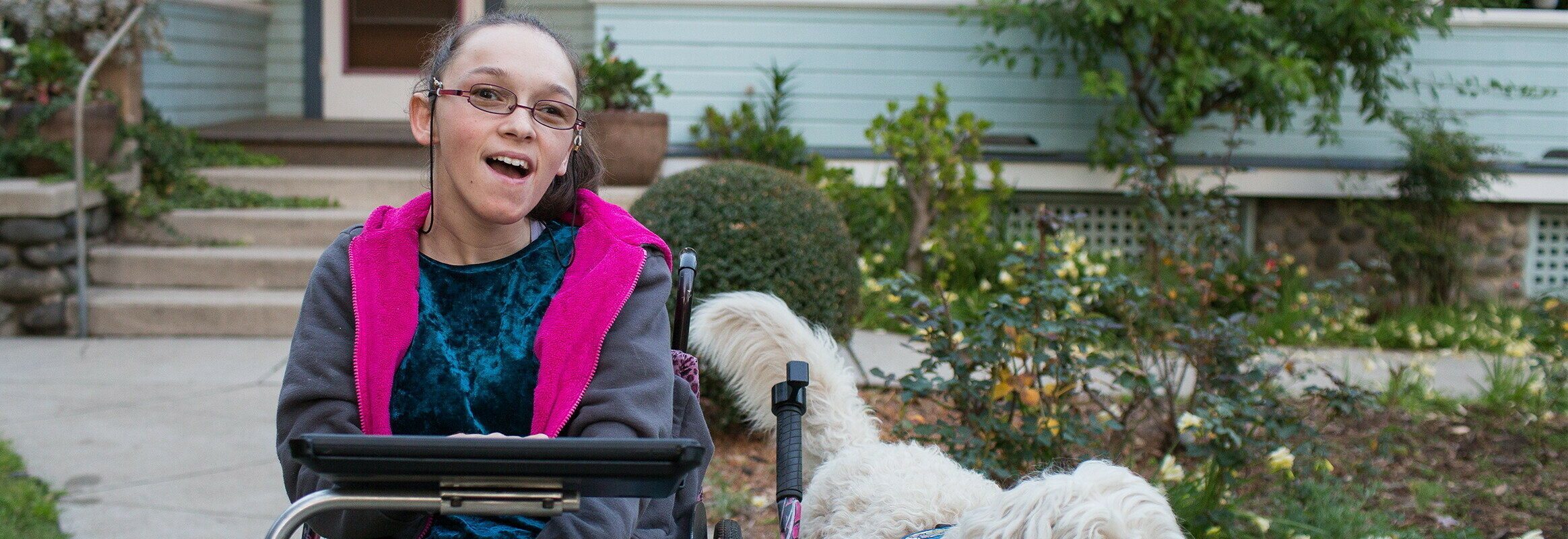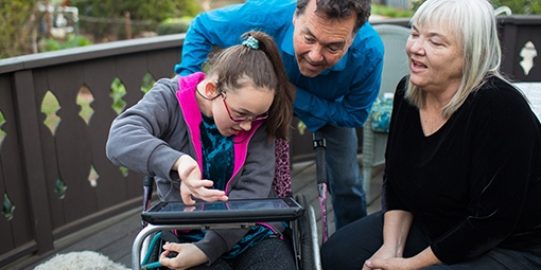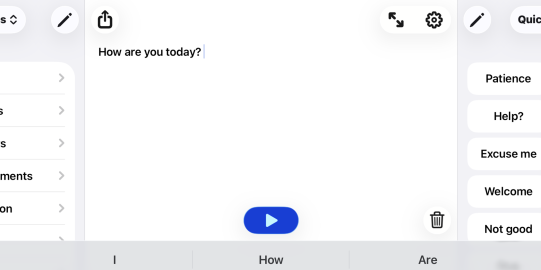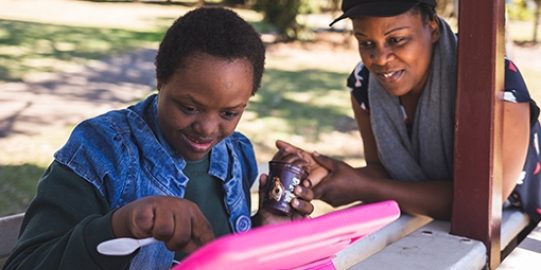Elina, we heard that you’re studying now. What subjects are you interested in, and what else do you spend your time on?
Yes, I am successfully thriving at Citrus College and after only being there one year, I was eligible to make it into the Honors Program and even made it onto the Dean’s List!
I also did all of my Introduction to Theater Arts quizzes and tests entirely on my iPad for the first time (using Keeble) and successfully targeting every single key, independently.
I am planning on going into Public Relations/Communications in order to support others with assistive technology. I plan to eventually transfer to a California State University. I’m not sure which one just yet, but I am still planning on majoring in Communications.
I currently volunteer for Canine Angels and do a little work for Conductive Education.
What kind of AAC and assistive technology do you use in your everyday life?
Wrise, Proloquo2Go, Proloquo4Text, and Keeble. I also still use my ‘staple’ Mac laptop, with AssistiveWare’s Keystrokes and Proloquo with a slow speed joystick and a switch.
How did you first start using AAC? What was it like for you then?
I was in the 2nd Grade Combined Conductive Education/Assistive Technology Classroom when I was first assessed my teacher, Mrs. Ginny McKee. She was the assistive tech specialist for the whole school district. I was very fortunate to be able to try all of the assistive technology she could possibly think of!
At the same time, Borbala Goda, my classroom Conductive Ed therapist, worked closely with Mrs. McKee to make sure my plinth desk with a grab bar and slatted stool seating were correct. Their teamwork was essential so that I could even access the equipment properly in the first place.
I tried things such as single-switch step scanning, auto scanning, touch screens, various trackballs, a head mouse, and joysticks galore. It took roughly one year to settle in on an assistive technology system that worked easily for me. That system turned out to be a Mac laptop, using AssistiveWare’s Keystrokes and Proloquo with a slow speed joystick and a switch. Bingo! It all fell into place and I could finally write, speak, and even draw independently!
Mrs. McKee found out about AssistiveWare at the CSUN International Assistive Technology Conference for People with Disabilities. Two years later, I was introduced to David when he came out to California to meet and film some of his clients.
My 3-minute video, “Me and My Computer” was created when I was 10 years old. I ended the video by saying, “The computer means life to me”. This phrase acquires deeper meaning as I progress throughout life. Now, ten years later, and I hear that professors at some colleges still show my video to their students in order to demonstrate how people with disabilities can communicate and interact meaningfully.
I am so lucky to be part of AssistiveWare’s history. They are a fantastic software company that truly cares and are committed to making sure people with disabilities are heard and continually supported!



